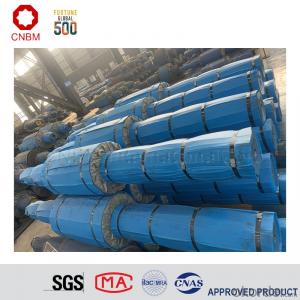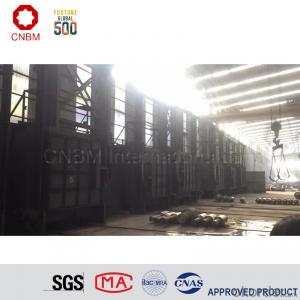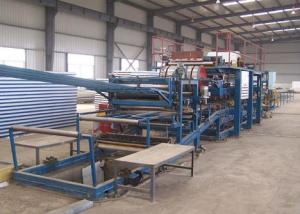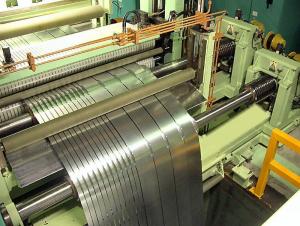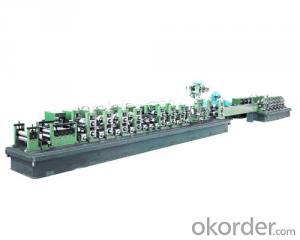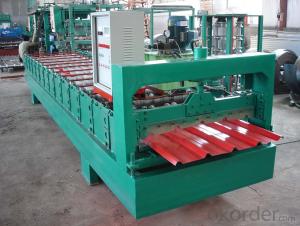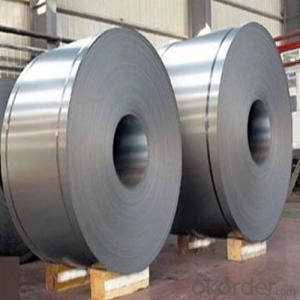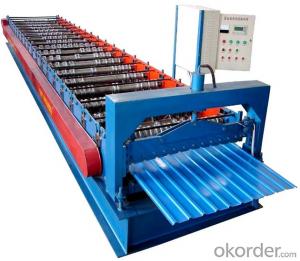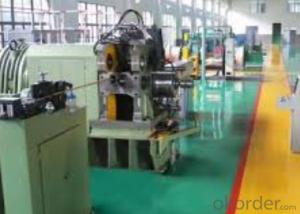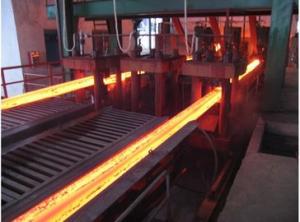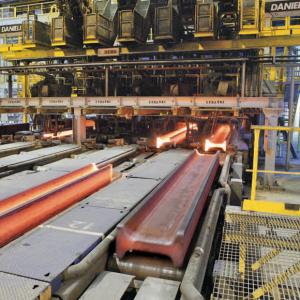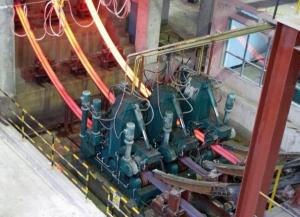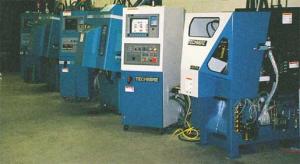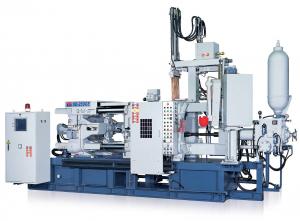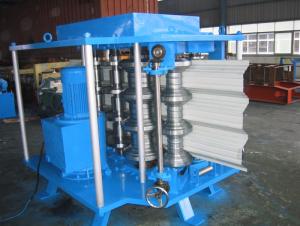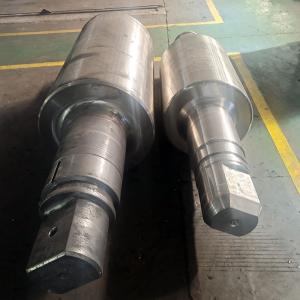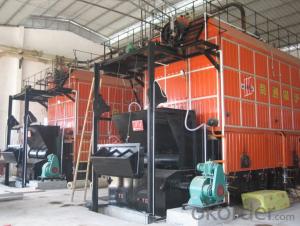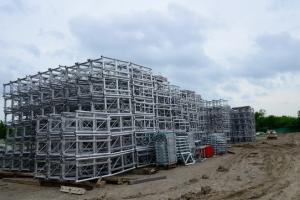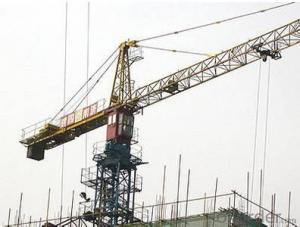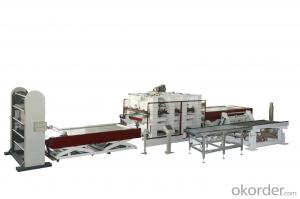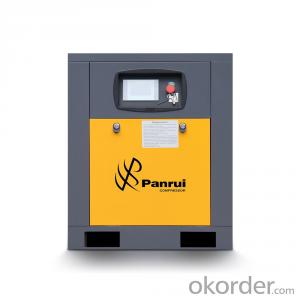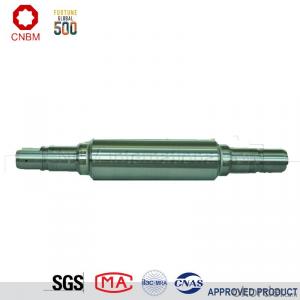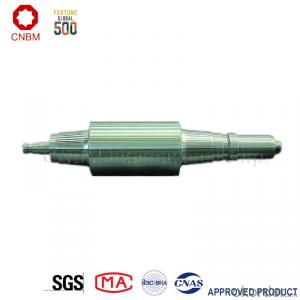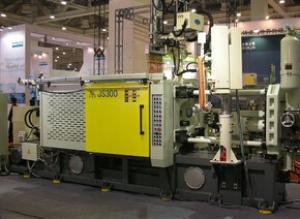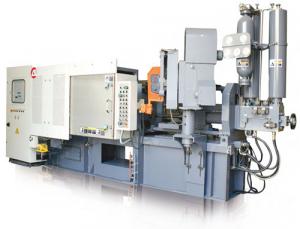Half-Speed Steel Roll With High Quality and Low Price
- Loading Port:
- Tianjin
- Payment Terms:
- TT OR LC
- Min Order Qty:
- 2 m.t.
- Supply Capability:
- 41000 m.t./month
- Option:
- 650X1780X5540; 650X1780X5540; 680X2080X5920
OKorder Service Pledge
OKorder Financial Service
You Might Also Like
Item specifice
Company Profile
CNBM International Corporation (CNBM International) is the most important trading platform of CNBM Group Corporation, a state-owned company under the direct supervision of State-owned Assets Supervision and Administration Commission of the State Council.
CNBM Group is integrated with four business segments: Manufacture, R&D,Sets of equipment and Logistics trading.Mill rolls are our main products.
CNBM International is highly recognized by its business partners and clients all over the world and has established good business relationship with the customers in over 120 countries and regions all over the world.

The product introduction of mill roll
Equipped with advanced technological facilities on melting, casting, forging, heat treating and mechanical machining, our factory has formed 9 professional complete roll manufacturing lines of cast steel, cast iron and forged steel rolls such as strip mill rolls, heavy section mill rolls, wire & bar rolls, special shaped rolls and small-sized cold rolls and specialized production lines of bloom and slab CCM, coke oven equipments and wind power products. Annual production capacity of mill rolls is 500,000 tons, metallurgical equipment is 80,000 tons.

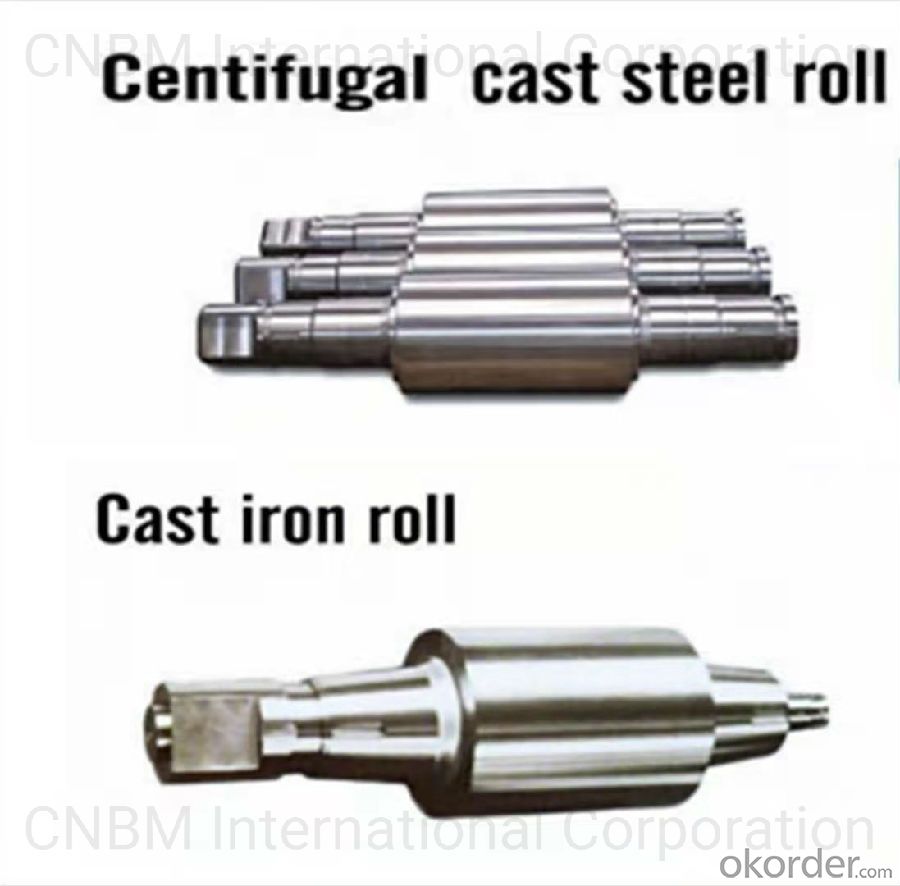
Workshop
Workshop is the core of our company and undertakes all of scientific research work. The company specially produces and supplies all kinds of roll used for hot strip mill, cold strip mill, plate & heavy plate mill, large-sized section mill, universal mill etc.

Products & Specification
| Mill | Application | Material | Product Specification | ||
| Hot Strip Mill | Large-sized vertical roll | Special alloy cast roll, Adamite | All Sizes | ||
| Small-sized vertical roll | Adamite, HiCr iron | ||||
| Roughing work roll | Special alloy cast steel, Adamite, HiCr steel, Semi-HSS, HiCr iron | ||||
| Finish rolling | Early stand work roll | HiCr iron, HSS | |||
| Later stand work roll | ICDP, HSS | ||||
| Finishing back-up roll | Duplex cast steel | D≤¢2000,W≤80t | |||
| Alloy forged steel | D≤¢2000,W≤75t | ||||
| Temper rolling | Work roll | HiCr iron | All Sizes | ||
| Alloy forged steel | |||||
| Back-up roll | ICDP | ||||
| Duplex cast steel | D≤¢2000, W≤80t | ||||
| Alloy forged steel | D≤¢2000, W≤75t | ||||
| Mill | Application | Material | Product specification |
Cold strip mill & Single stand cold mill | Work roll | Alloy forged steel | All Sizes |
| Intermediate roll | Alloy forged steel | ||
| Temper roll | Alloy forged steel | ||
| Back-up roll | Duplex cast steel | D≤¢2000,W≤80t | |
| Alloy forged steel | D≤¢2000,W≤75t | ||
Largesized universal structural mill | Break-down roll | Special alloy cast steel, alloy nodular iron | All Sizes |
| Horizontal collar | High carbon adamite (duplex) | ||
| Vertical collar | High carbon adamite, HiCr iron | ||
| Edger roll Edger roll | High carbon adamite | ||
| Shaft | Alloy forged steel |
| Mill | Application | Marterial | Product Specification | |
| CSP | Vertical Roll | Adamite, Special alloy cast steel, HiCr iron | All Sizes | |
| Roughing work roll | Semi-HSS, HiCr Steel | |||
| Finish rolling | Early stand | HiCr iron, HSS | ||
| Later stand | ICDP, HSS | |||
| Roughing & Finishing back-up roll | Duplex cast steel | D≤¢2000,W≤80t | ||
| Alloy forged steel | D≤¢2000,W≤75t | |||
| Steckel Mill | Vertical roll | Adamite, Special alloy cast steel | All Sizes | |
| Roughing work roll | ICDP, HiCr iron | |||
| Finishing work roll | HiCr iron, ICDP | |||
| Back-up roll | Duplex cast steel | D≤¢2000,W≤80t | ||
| Alloy forged steel | D≤¢2000,W≤75t | |||
| Plate & Heavy plate mill | Rough rolling | 2-hi work roll | Special alloy cast steel, Tool steel | All Sizes |
| 4-hi work roll | HiCr iron, ICDP | |||
| Finishing work roll | HiCr iron, ICDP | |||
| Single stand work roll | HiCr iron, ICDP | |||
| Back-up roll | Duplex cast steel | D≤¢2000,W≤80t | ||
| Alloy forged steel | D≤¢2000,W≤75t | |||
Quality Control
The company has the most advanced experimental and testing equipments in global mill roll industry, including direct-reading spectrometer, spectrum analyzer , X-ray fluorescence analyzer, scanning electronic microscope, energy disperse spectroscopy, X-ray diffractometer, image analyzer, high/low temperature metallographic microscope, X-ray stress meter, brittleness temperature tester, thermal analogue machine, dilatometer, macro and micro hardness tester, OMNISCAM-1X automatic flaw detection, USN60 ultrasonic flaw detector, magnetic powder and non-destructive flaw detection etc,. The advanced inspection equipments and experimental methods provide guarantee for quality control and experiment on material, usability test and performance.
The factories of CNBM invested 2.3 billion RMB for large-scale
CNBM international Corporation has completed equipment and technology upgrade transformation, which was concentrated on three projects, production line of centrifugal casting rolls for hot strip and plate mill, forged roll for cold/hot strip mill, national class technology center and roll material lab. Through upgrade transformation, the following targets have been achideved:
(1)It becomes the world's biggest specialized mill roll maker with the largest production scale, the most complete specifications of products and the most extensive coverage of various rolls used on rolling mill.
(2) The technology of equipments has reached international leading level.
(3) "Mechanization, automation, intellectualization, digitization" of equipments obviously improve the quality control ability.
(4) New types of research instruments improve the R&D capacity of products.
Customers Visit
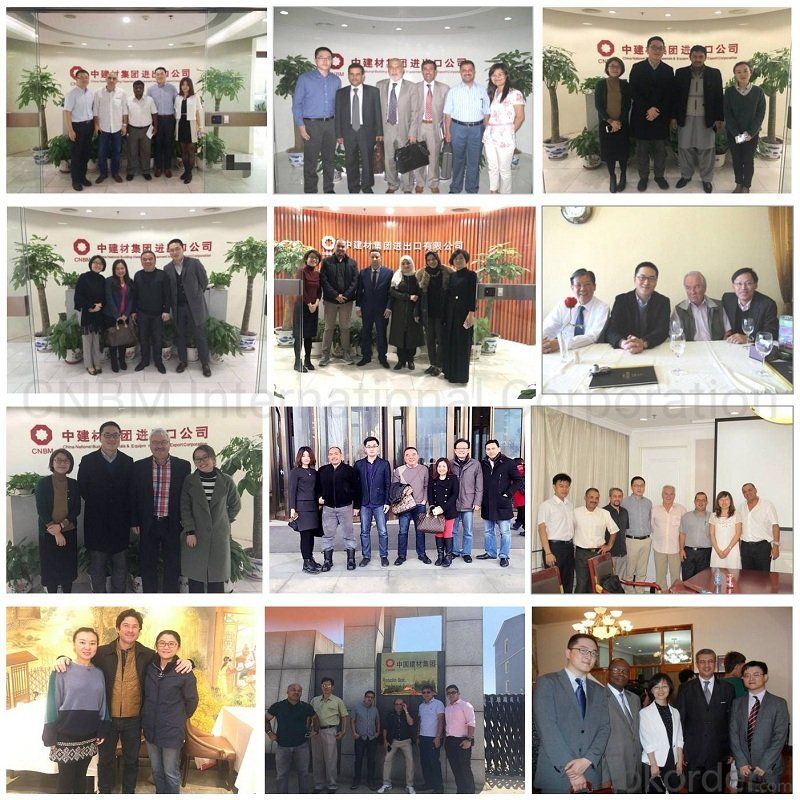
FAQ
Q:Are you a trading company or manufacturer?
A:CNBM is a large-scale central governmental industrial group with its own manufacturing sector, research and development sector, trading sector and logistics sector.
Q:I have some special requirement about specifications.
A:We have a well-rounded product range, which endows us with the capability of applying many special specifications. Please feel free to contact us with yours.
Q:Do you accept OEM service?
A:Yes, we do.
Q:What is your delivery time?
A:It depends on the size/complexity of your order and our own production schedule. Usually we provide a faster delivery than the industry's average.
Q:What is the payment term?
A:Our payment terms are negotiable.
Q:Can I have my own logo on the product?
A:Sure, we can apply your own logo on the products according to your requirement.
- Q:How do you improve efficiency and quality through virtual testing and analysis?
- Various industries now rely on virtual testing and analysis as vital tools for improving efficiency and quality. Utilizing these technologies not only saves businesses time and resources but also ensures the highest standards for their products or services. Here are several ways in which virtual testing and analysis can contribute to enhancing efficiency and quality: 1. Time and cost reduction: By eliminating the need for physical prototypes, virtual testing saves both time and money. Physical prototyping can be a time-consuming and expensive process. Conducting virtual simulations allows businesses to identify potential flaws or issues early on during development, enabling timely modifications and avoiding costly redesigns or recalls. 2. Improved accuracy and precision: Virtual testing and analysis take place in a controlled environment, facilitating precise measurements and accurate data collection. This capability allows businesses to detect even the most subtle defects or inefficiencies that may not be easily identifiable through physical testing. 3. Iterative design improvements: Virtual testing enables businesses to quickly test different design iterations and evaluate their performance virtually. This iterative process fosters continuous improvements, ensuring that the final product is optimized for efficiency and quality. 4. Real-time data analysis: Virtual testing provides immediate data analysis, offering instant feedback on product performance. By monitoring and analyzing data in real-time, businesses can identify potential issues or opportunities for improvement, leading to more efficient and higher-quality products. 5. Simulation of real-world conditions: Virtual testing and analysis allow businesses to simulate various scenarios and real-world conditions, ensuring that products perform as expected in different environments. By replicating these conditions virtually, businesses can optimize product performance and durability, reducing the risk of failures in the field. 6. Integration with other technologies: Virtual testing and analysis seamlessly integrate with other emerging technologies such as artificial intelligence, machine learning, and the Internet of Things (IoT). This integration enables automated data collection, analysis, and decision-making, further enhancing efficiency and quality in the testing process. In conclusion, virtual testing and analysis provide significant benefits in terms of efficiency and quality improvement. By leveraging these technologies, businesses can reduce costs, enhance accuracy, and make iterative design improvements. Real-time data analysis, simulation of real-world conditions, and integration with other technologies further contribute to streamlining the testing process and ensuring top-notch quality products or services.
- Q:How does metal casting machinery improve production efficiency?
- Metal casting machinery improves production efficiency by automating the casting process, reducing the need for manual labor and streamlining the overall production process. It enables faster and more accurate production of metal parts, resulting in increased output and reduced production time. Additionally, these machines allow for the creation of complex and intricate designs that would be difficult to achieve manually, thereby enhancing the overall quality and precision of the final products.
- Q:What are the different types of challenges and opportunities in the global metal casting machinery market?
- The global metal casting machinery market presents various challenges and opportunities. One challenge is the increasing competition among manufacturers, leading to price pressures and the need for constant innovation to stay ahead. Another challenge is the environmental regulations and sustainability concerns, requiring the adoption of cleaner and more efficient technologies. On the other hand, there are opportunities in emerging markets with growing industrialization and infrastructure development. Additionally, advancements in automation and digital technologies provide opportunities to improve productivity and enhance process control. Overall, the market offers challenges that require adaptation and opportunities for growth through innovation and expanding into new markets.
- Q:How is the sand reclaimed and reused in metal casting machinery?
- Sand reclamation is an essential process in metal casting machinery that allows for the reuse of sand, reducing waste and production costs. The process typically involves several steps. Firstly, the used sand is collected and transported to a reclamation plant. At the plant, the sand is carefully separated from the metal castings, sprues, and gates. This separation can be done manually or through automated processes, such as shakeout machines or vibratory screens. Once separated, the sand undergoes a cleaning process to remove any residual binders, coatings, or impurities. This can be achieved through various methods, including mechanical scrubbing, thermal treatment, or chemical processes. Mechanical scrubbing involves agitating the sand with blades or brushes to remove unwanted materials, while thermal treatment utilizes high temperatures to burn off binders and coatings. Chemical processes involve the use of solvents or acids to dissolve and remove impurities. After cleaning, the reclaimed sand is subjected to further treatments to restore its properties and make it suitable for reuse. These treatments may include additions of new binders or additives to improve the sand's strength, consistency, or flowability. The sand is also typically screened to ensure its particle size distribution meets the required specifications for casting. Once the reclaimed sand has undergone these treatments, it is ready to be reintroduced into the metal casting process. The sand is usually mixed with new sand in a predetermined ratio to achieve the desired quality and consistency. This mixture is then used to create new molds or cores for metal casting operations. Overall, the reclamation and reuse of sand in metal casting machinery is a crucial practice that not only reduces waste and environmental impact but also helps to lower production costs. By reclaiming and treating used sand, manufacturers can maintain a sustainable and efficient casting process while ensuring the quality and integrity of their castings.
- Q:What are the different types of cores used with metal casting machinery?
- The different types of cores used with metal casting machinery include green sand cores, dry sand cores, shell cores, and ceramic cores.
- Q:What are the key considerations in upgrading metal casting machinery?
- The key considerations in upgrading metal casting machinery include assessing the current machinery's capabilities and limitations, identifying specific areas for improvement, evaluating the cost and feasibility of the upgrade, ensuring compatibility with existing processes and systems, and considering the potential impact on production efficiency and quality. Additionally, factors such as regulatory compliance, safety measures, and the availability of skilled operators should also be taken into account when planning the upgrade.
- Q:How is the mold created using metal casting machinery?
- Metal casting machinery is employed for the purpose of manufacturing molds through a procedure known as metal casting. The initial stage in mold creation is pattern design, which entails producing a replica of the desired end product. Typically, the pattern is constructed using materials like wood, plastic, or metal. Once the pattern is completed, it is positioned inside a flask, which serves as a box-like container. Subsequently, the flask is filled with molding material, such as sand or clay, commonly referred to as molding sand. The molding sand is compacted tightly around the pattern to form a mold cavity. Once the mold cavity is established, the pattern is extracted from the flask, leaving a cavity in the shape of the desired product. This cavity functions as the mold into which the molten metal will be poured. To ensure the mold's strength to endure the elevated temperatures and pressures associated with casting, diverse additives may be blended with the molding sand. These additives may include binders, which enhance the cohesion of the sand particles, as well as refractory materials, which augment the mold's heat resistance. Upon completion of mold preparation, the metal casting machinery becomes operational. The molten metal, generally in liquid form, is introduced into the mold cavity via a gating system. The gating system comprises channels and runners that guide the molten metal into the mold and provide an avenue for the escape of air and gases. After the molten metal is poured into the mold, it is left to cool and solidify within the mold. The cooling duration may vary depending on factors such as the casting's size and complexity, as well as the type of metal employed. Following solidification of the metal, the mold is opened, and the freshly cast metal component is extracted. Overall, the process of manufacturing a mold using metal casting machinery encompasses pattern design and creation, packing molding sand around the pattern to generate a mold cavity, pouring molten metal into the cavity, and allowing the metal to cool and solidify before removing the final product from the mold.
- Q:What are the different types of melting furnaces used in metal casting machinery?
- There are several types of melting furnaces commonly used in metal casting machinery, including cupola furnaces, electric arc furnaces, induction furnaces, and crucible furnaces.
- Q:What are the different types of mechanical testing methods used in metal casting machinery?
- There are several different types of mechanical testing methods used in metal casting machinery, including tensile testing, hardness testing, impact testing, and bend testing. Tensile testing measures the material's ability to resist pulling forces, hardness testing determines the material's resistance to indentation or scratching, impact testing evaluates its ability to withstand sudden shocks or impacts, and bend testing assesses its flexibility and ductility by subjecting it to bending forces. These testing methods help ensure the quality and integrity of metal castings produced by machinery.
- Q:What are the maintenance and repair costs associated with metal casting machinery?
- The maintenance and repair costs associated with metal casting machinery can vary depending on several factors, including the type of machinery, its age, usage frequency, and the overall condition of the equipment. Regular maintenance of metal casting machinery is crucial to ensure its optimal performance and longevity. Maintenance tasks typically include cleaning, lubricating moving parts, inspecting and replacing worn-out components, and performing routine checks to identify any potential issues. These maintenance tasks help prevent breakdowns, extend the lifespan of the machinery, and reduce the risk of costly repairs. The costs associated with maintenance can vary depending on the complexity of the machinery and the expertise required to perform the tasks. Simple maintenance tasks such as cleaning and lubricating can often be done by the operators themselves, requiring minimal expenses. However, more complex maintenance tasks may require the assistance of specialized technicians or engineers, which can increase the overall maintenance costs. In addition to regular maintenance, metal casting machinery may require repairs from time to time. Repair costs can vary greatly depending on the nature and severity of the issue. Minor repairs such as replacing a faulty sensor or a worn-out belt may only incur moderate expenses. However, major repairs, such as replacing a malfunctioning furnace or a damaged casting mold, can be significantly more expensive. Furthermore, the availability and cost of spare parts can also impact the maintenance and repair costs. If the machinery is older or from a less common brand, finding suitable spare parts may be more challenging and costly. To minimize maintenance and repair costs, it is crucial to follow a comprehensive preventive maintenance schedule, conduct regular inspections, and address any issues promptly. Investing in high-quality machinery and using it within its operational limits can also help reduce the frequency and severity of repairs. Additionally, training operators on proper equipment usage and maintenance procedures can contribute to prolonging the machinery's lifespan and reducing overall costs.
1. Manufacturer Overview |
|
|---|---|
| Location | |
| Year Established | |
| Annual Output Value | |
| Main Markets | |
| Company Certifications | |
2. Manufacturer Certificates |
|
|---|---|
| a) Certification Name | |
| Range | |
| Reference | |
| Validity Period | |
3. Manufacturer Capability |
|
|---|---|
| a)Trade Capacity | |
| Nearest Port | |
| Export Percentage | |
| No.of Employees in Trade Department | |
| Language Spoken: | |
| b)Factory Information | |
| Factory Size: | |
| No. of Production Lines | |
| Contract Manufacturing | |
| Product Price Range | |
Send your message to us
Half-Speed Steel Roll With High Quality and Low Price
- Loading Port:
- Tianjin
- Payment Terms:
- TT OR LC
- Min Order Qty:
- 2 m.t.
- Supply Capability:
- 41000 m.t./month
- Option:
- 650X1780X5540; 650X1780X5540; 680X2080X5920
OKorder Service Pledge
OKorder Financial Service
Similar products
New products
Hot products
Hot Searches
Related keywords
